
REJECTION
REJECTION of dust and other deviant dangers plays an important role in maintaining the illusion of order. Completely Dusty is composed of structure provided by benandsebastian and dust provided by Thorvaldsen’s Museum in Copenhagen. The work takes inspiration from Thorvaldsen’s plaster sculptures, whose porous surfaces are stained by decades of dust.
Completely Dusty has not reached its full potential without the time taken for dust to settle into its underlying surfaces. The piece’s grooved walnut latticework and leather bindings both harbour dust and are fragile enough to be threatened by the delicate use of a feather duster. While dust slowly unsettles the piece’s obsessive order, attempting to thoroughly clean the piece would most likely lead to the work’s collapse. The piece both accommodates and defends the dust that we try to eliminate from our lives through clean lines and frictionless surfaces.
A R T I S T
“We’re intrigued by plaster casts as open works. They tend to have a lower status than their bronze equivalents, not just because of their lower weight and cost of production, but also because the plaster cast retains a preliminary, unfinished and permeable quality. The sculptures at Thorvaldsen’s Museum have been infiltrated by generations of airborne particles, from times when Copenhagen’s air was thick with coal dust. To be fully cleaned the sculptures would have to be washed, but this would be to destroy the work as it would remove the sculptures’ skin, which is a hybrid consisting both of sculptural material and layers of dust particles that have become incorporated over time. With ‘Completely Dusty’ we wanted to produce an open work that, by resisting cleaning through its fragile and inaccessible construction, would gradually incorporate the disorderly influence of dust within its own obsessive order.”
M U S E U M
“Whether dancing in sunbeams or lightly powdering the exhibits in a museum vitrine, dust is time made visible. It permeates any artefact, blurring its contours and borders, making it virtually impossible to say where the artefact stops and where the outside world begins. The coarse dust, from five microns in size, that the human eye can see unassisted, creates a powdery layer acting as a temporal veil between the observer and the observed. This velvety exoskeleton has us reaching for mops and buckets in recurring attempts to reset the clocks. Although quickening the inevitable decay of the object it settles on, dust can also imbue it with a certain stateliness or gravitas. If not left to settle too deeply it somehow enhances the artefact status of a sculpture or a brittle chair, underlining the fact that these things exist in a privileged world apart. But the difference between privilege and abjection may be only a few percent’s dust coverage. Dust really is the gentlest form of ruination possible”
“When the big girls “good for anything” arm themselves, each morning, with a big feather duster or even with a vacuum cleaner, they are perhaps not entirely ignorant that they contribute as much as the most positive savants to keeping off the evil phantoms that sicken cleanliness and logic.
GEORGES BATAILLE
A R T E F A C T D E T A I L S
Dust in dustbag
(2012)
20cm x 20cm x 16cm
paper, cardboard, dust
paper vacuum cleaner bag containing fine dust
The dust in this bag is from a backpack vacuum cleaner used to clean the plaster sculptures at Thorvaldsen’s Museum. The striking building on Slotsholmen, designed by the architect Bindesbøll, opened in 1848 making it the oldest original museum building in Copenhagen. It is also a mausoleum, housing the artist’s remains in a subterranean crypt in the inner courtyard.
Coal dust and wood smoke began settling in the curly locks, rotund buttocks and high relief prancing horses so lovingly crafted by the neo-classicist sculptor even before they left his Roman workshop. Contemporary museum dust as in this particular bag consists mainly of hair and skin cells and textile fibres from museum visitors’ bodies and clothing. Since we shed more dust when we move suddenly or quickly, it is desirable for museums to design smooth routes through their collections, thereby minimising the dust shed and the chemical damage it creates and assists.
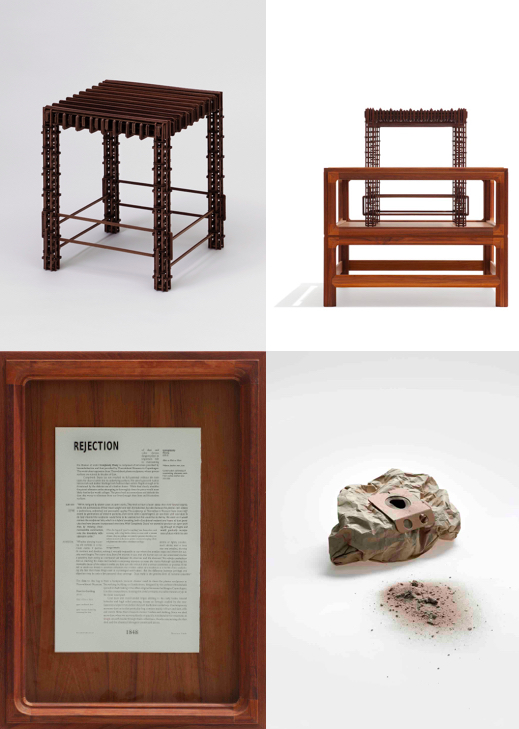
Completely Dusty
2012
Artwork ; Framed text ; Diasec print
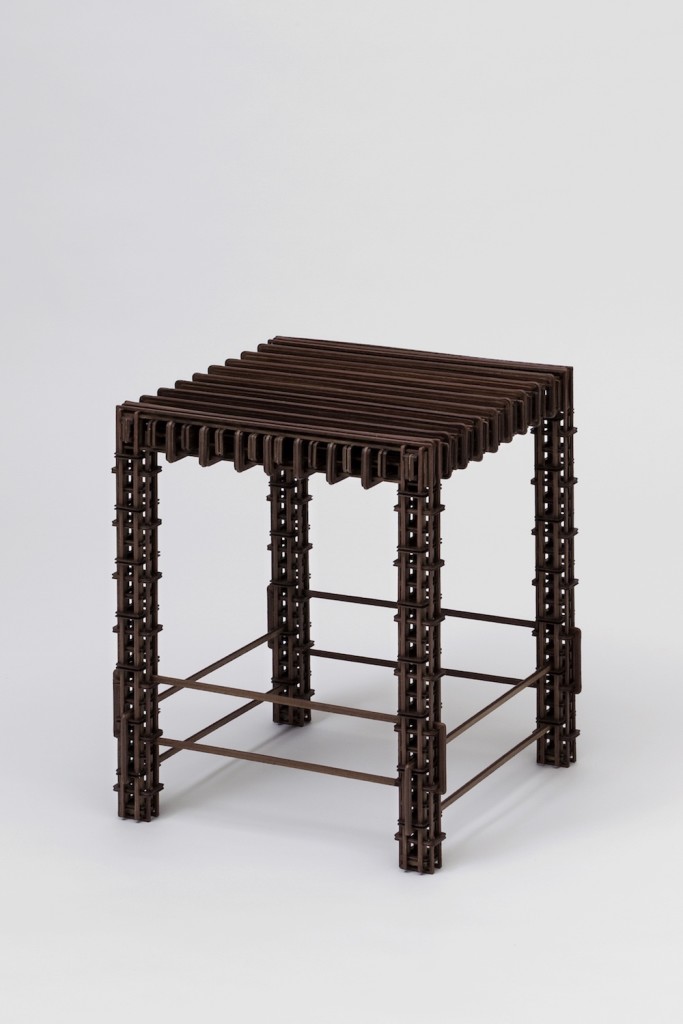
Completely Dusty
2012
Walnut, leather, wax, dust
40 x 40 x 45 cm
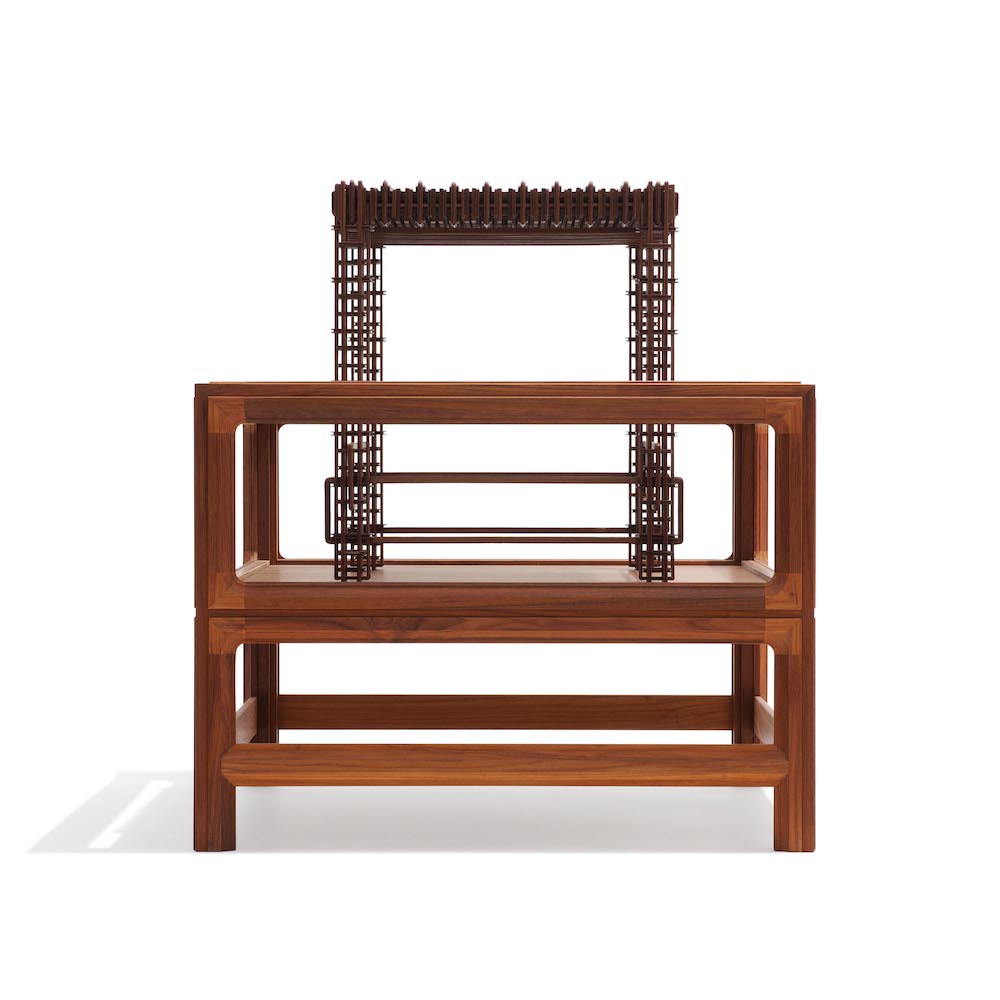
Completely Dusty
2012
Teak vitrine
Walnut, leather, wax, dust
73 x 73 x 55 cm
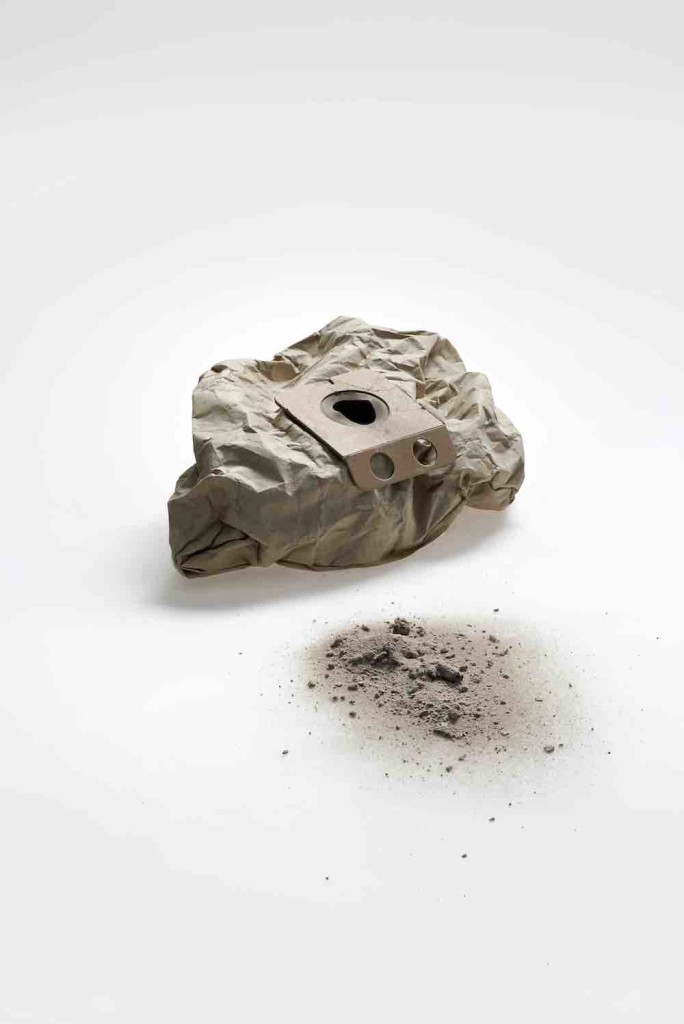
Completely Dusty
2012
Diasec print
68 x 48 x 3 cm
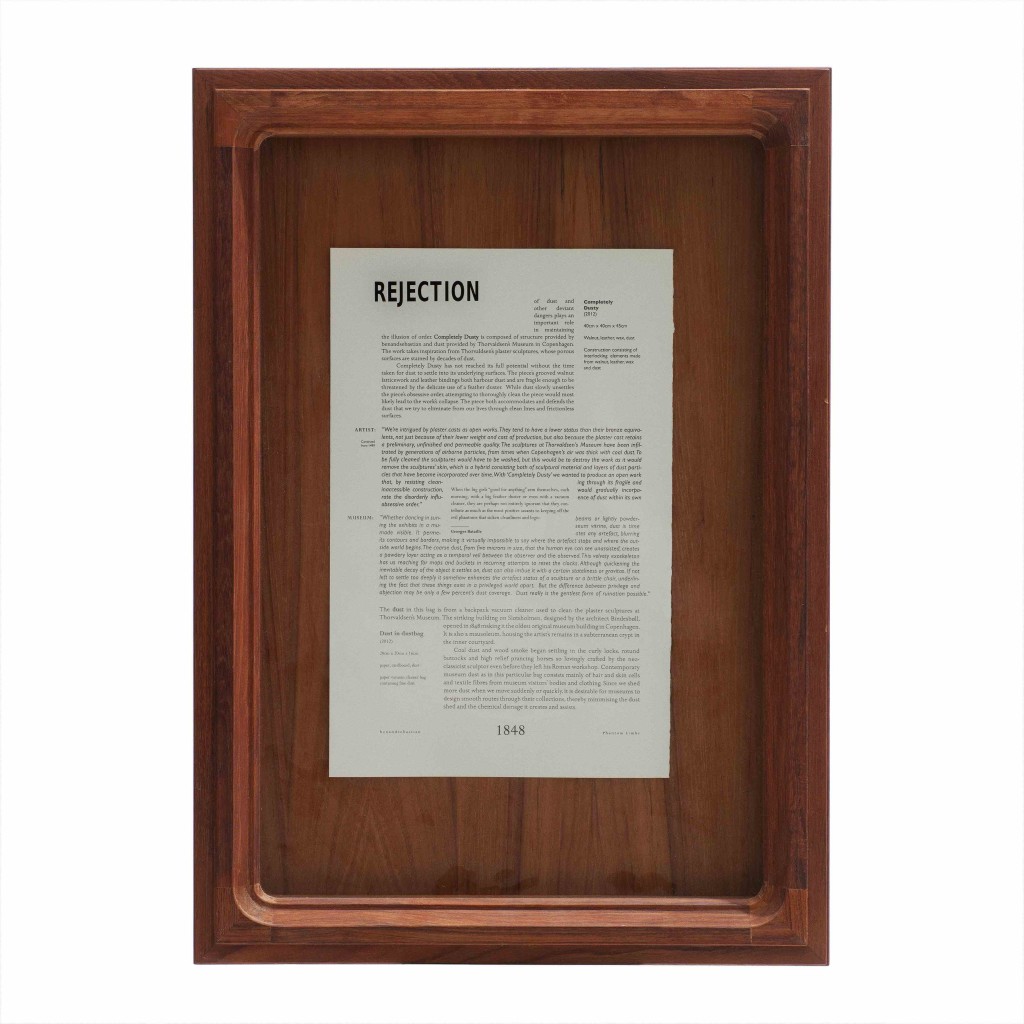
Completely Dusty
2012
Rejection
Framed text
68 x 48 x 5 cm
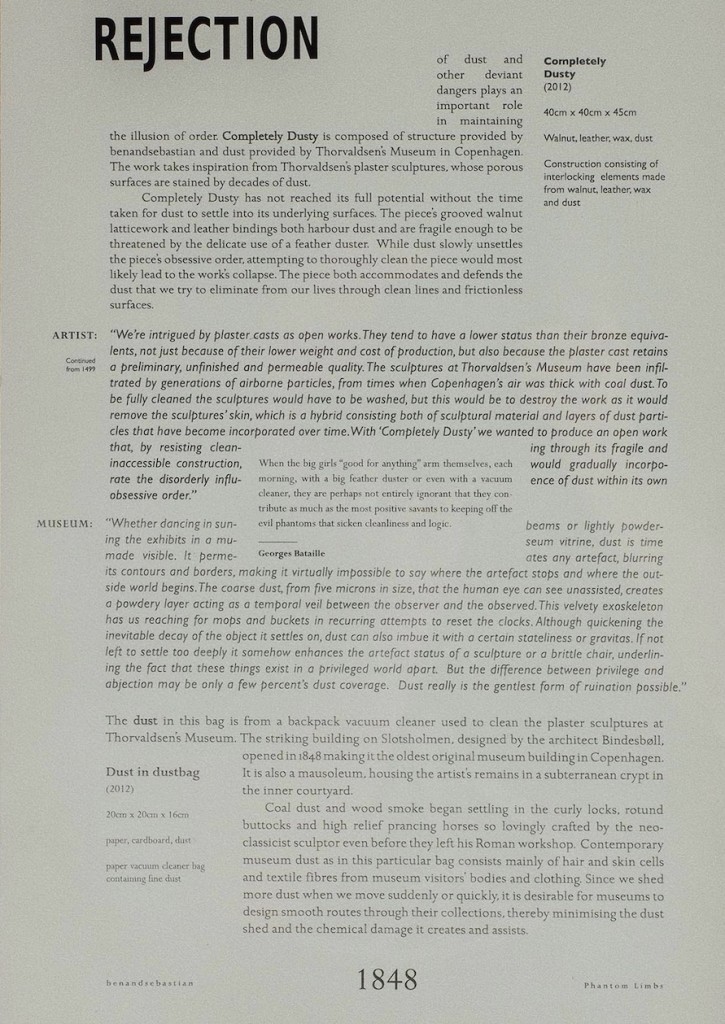
Completely Dusty
2012
Rejection
Text
68 x 48 x 5 cm
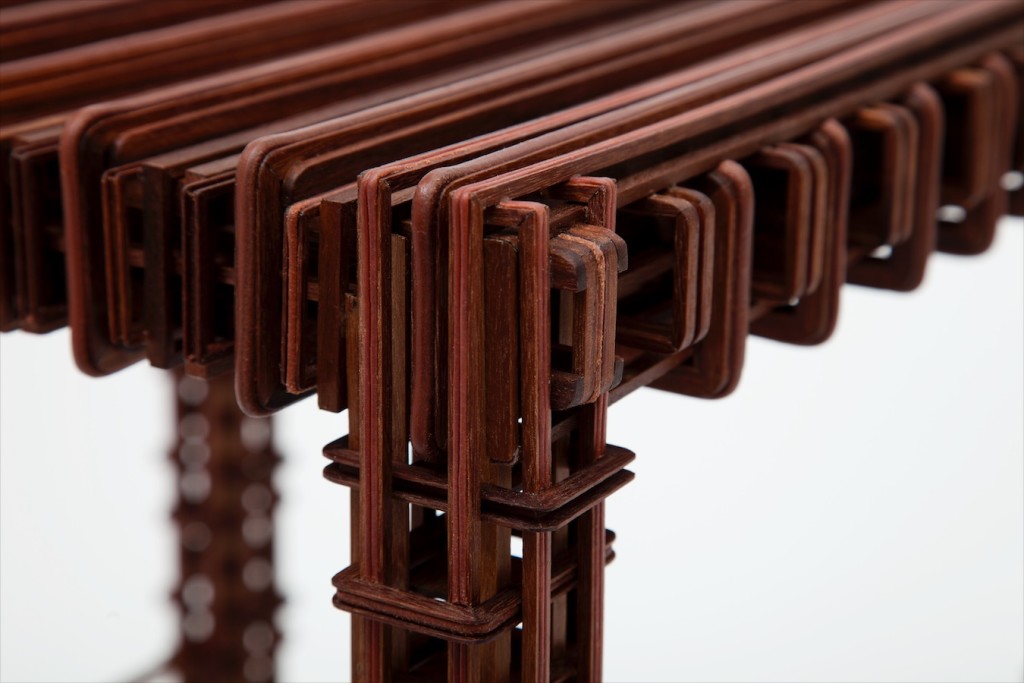
Completely Dusty
2012
Artwork detail
Walnut, leather, wax, dust
40 x 40 x 45 cm
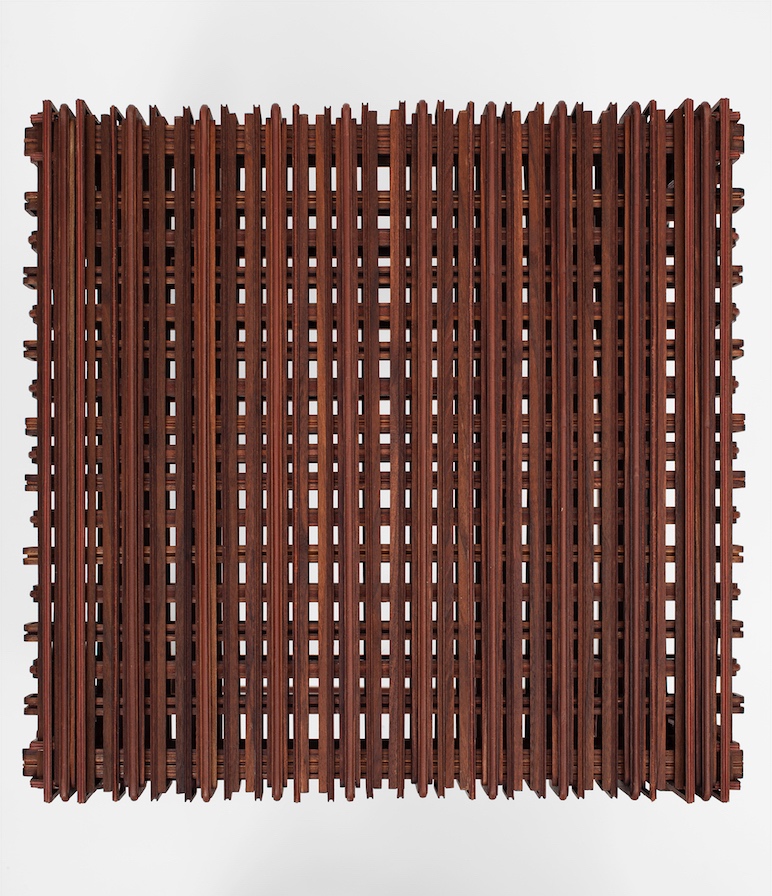
Completely Dusty
2012
Artwork detail
Walnut, leather, wax, dust
40 x 40 x 45 cm

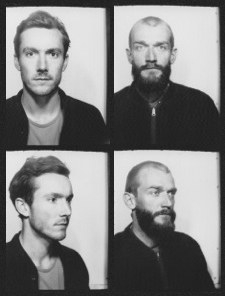
‘The work of the collaborative artist practice, benandsebastian, teeters on a cusp between designed physicality and intangible theories of the mind. Trained in architecture and theoretically versed, their sculptures take on elaborate mechanics and boast intricate detailing, yet speak to vast philosophical and sociological systems. It is impossible to concretely anchor their work, an elusiveness made evident in their recent exhibition at the Designmuseum Danmark, ‘Phantom Limbs’.
Embedded directly within the permanent collection and specifically paired with unexpected inventory from Copenhagen’s Medical Museum, National Museum and the attics of Designmuseum Danmark, their work becomes not only the sculptures on display, but the myriad relationships made between context and object, between body and limb. Evoking the medical sense of phantom limbs, where an amputee still feels the presence of the absent limb, benandsebastian navigate the museum context and call into question the assumed wholeness we expect, perceive and viscerally feel.’
Cassandra Edlefsen Lasch,
independent curator, DAMn magazine, issue 33


